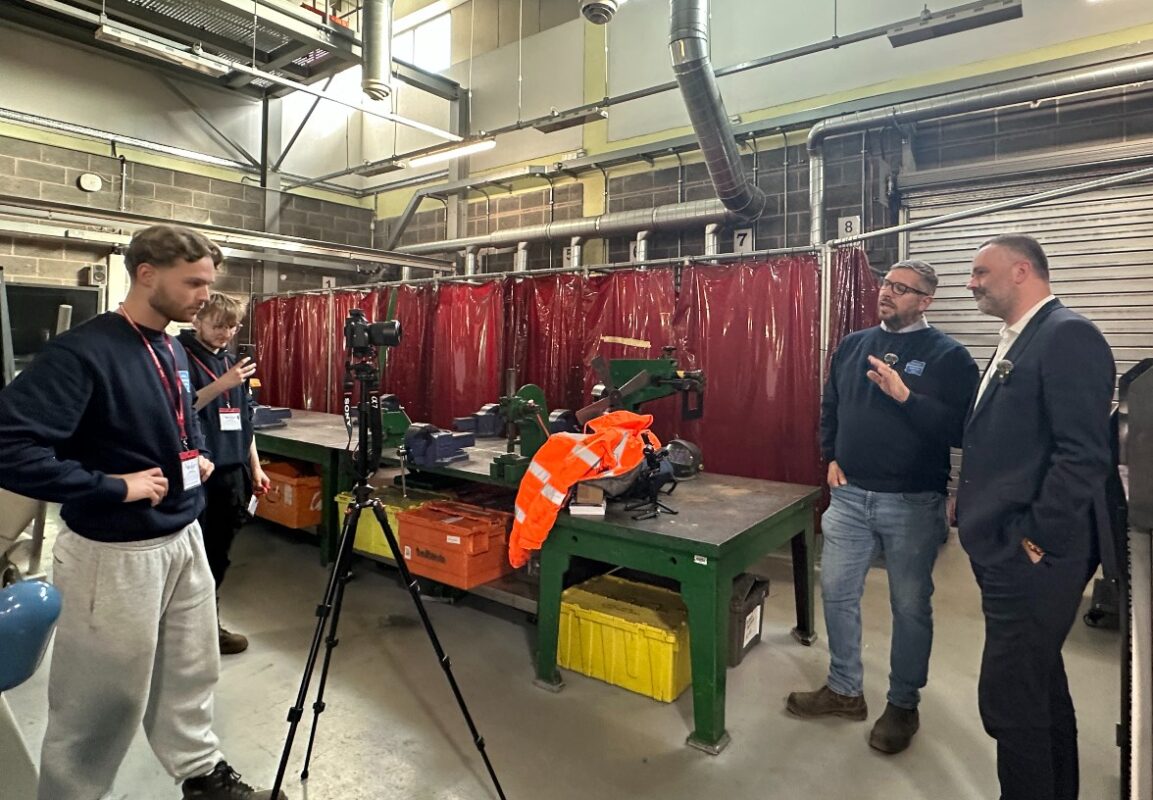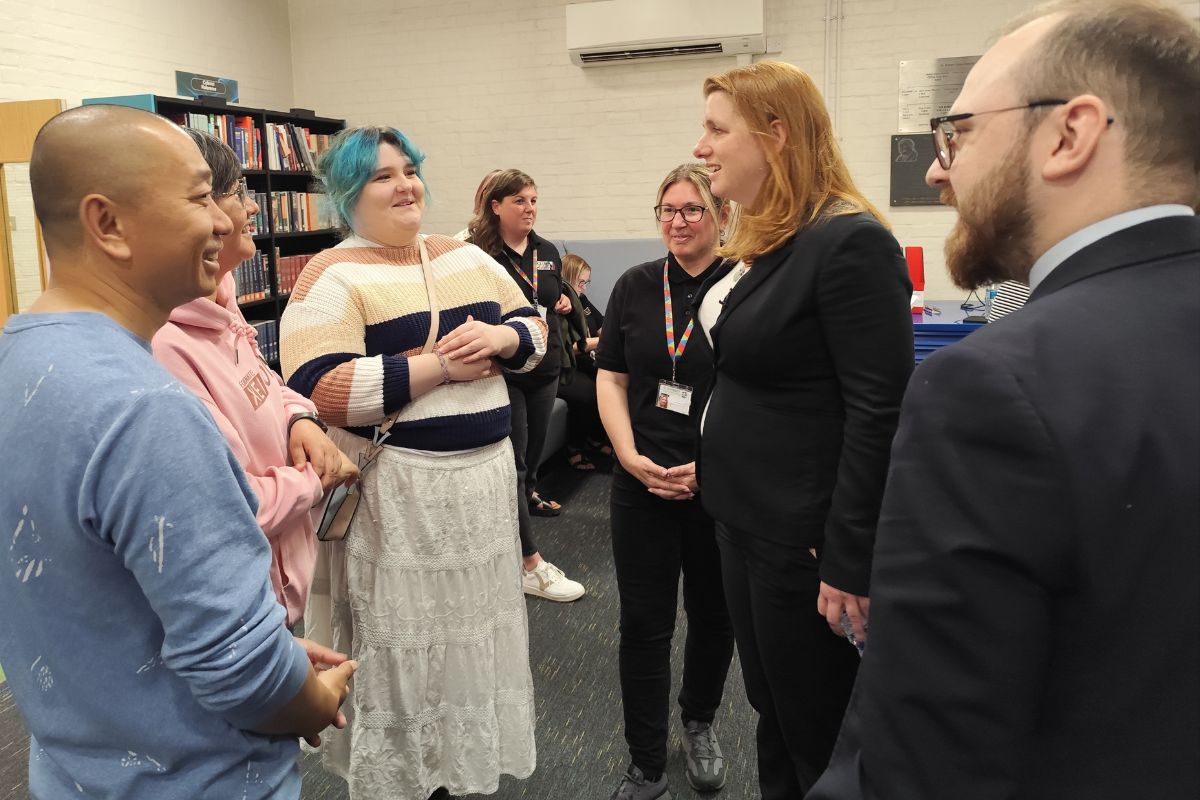Enhancing Staffing Efficiency: The Role of AI in Education

OMMAX digital strategy partner Isabella Calderon Hoyos explains how AI is transforming staffing in education, bringing simplicity, speed and efficiency to a sector in need.
Artificial Intelligence has commanded attention as a force with fantastic potential, particularly around driving operational performance by assisting humans to deliver a host of tasks more quickly and efficiently than before. One area where this is particularly evident is in human resources for the education sector, where AI is playing an increasingly pivotal role.
Staffing efficiency is particularly important in education to ensure a high quality of teaching and standard of care for children is met. However, we are seeing a growing trend where staff availability continues to drop in the education sector as many places struggle to hire or retain staff, leading to larger classrooms and poorer teaching outcomes.
As educational institutions work to manage the logistical challenges around staffing efficiency, investing time and capital into tech solutions is understandably not a priority. However, by neglecting technology’s potential, education leaders risk missing out on powerful tools and solutions.
AI as a catalyst for staffing efficiency in education
One of the biggest problems that the education sector faces is having enough trained staff members to teach the number of children in classrooms. Moreover, due to poor shift working logistics, individuals working across all parts of the education sector are struggling to manage the balancing act between ensuring staff numbers are adequately met with the work-life balance of employees. The HSE estimates that in education alone, stress, depression and anxiety results in 1,383 days lost annually, or half a day per worker.
This problem is compounded by a funding problem specifically in public sector education, and the Education Policy Institute estimates that school costs will increase faster than funding over the next two years. Between the limited staff numbers and financial capital available in the sector, education leaders are both time and resource-poor. This leaves limited scope for technology for leaders to be looking into technology solutions. Nevertheless, it is not only worth the investment, it is essential that leaders find the time to look into tech solutions as they could provide tangible solutions to some of the biggest problems the sector is experiencing today.
AI specifically is important for governments and schooling institutions to pay more attention to, including the role AI can play in improving staff logistics optimisation. AI is an investment into harnessing data analysis to achieve fast-acting, tangible benefits across the education sector. AI is able to relieve staff from mundane office and HR tasks that would normally consume much of their time, help train teachers and support students, address individual learning needs and reduce extra costs. Ultimately, this leads to more time for education leaders and much more efficient use of resources.
Digging deeper into how AI can help
Harnessing the capabilities of AI and machine learning (ML) comes with a number of benefits. For example, schools can use AI and ML to negotiate intricate guidelines surrounding teacher-to-children ratios, prioritise familiarity between staff and children, and make real-time decisions regarding the allocation of internal or external staffing resources. Additionally, AI can assist staff with external staffing agencies by carrying out administrative roles and significantly reducing associated costs. Beyond cost savings, schools can enhance speed and efficiency in employee resourcing, translating into superior outcomes and improved overall performance. AI tools also help with predictive analytics to steer HR strategy around activities like hiring and predicting turnover.
Our team at OMMAX has successfully shown this, having worked with a popular nursery chain in the UK to create a staffing tool, supported by AI & ML, that was optimised to negotiate guidelines around teacher:children ratios, prefer staff that are familiar to the children and instantly assess whether to pull from across the nursery’s network of staff or pursue additional external staffing. With this tool in place in 170 nurseries, they found that they were able to save 8 hours a week per location and reduce costs from external staffing agencies by 70%. Speed and efficiency of their employee resourcing was also improved, helping with struggles around labour shortages, shifts, and short-term sick leaves which are common to the education sector, amongst other industries. Here, AI was able to help automatically optimise the current set-up to satisfy all stakeholders and goals, including but not limited to regulators, customers and profitability.
Similarly, Epsom and Ewell High School has benefitted from the positive impact of AI in the classroom, recording a boost in staff engagement with students and catering to individual learning needs. The school highlighted the potential for AI’s ability to assist teachers with managing their work and improving students’ learning outcomes.
AI is not new to the education sector but it is also not particularly widespread, especially outside of the private institutions which typically have more resources to experiment with tools like AI. Building upon the success cases we’ve already seen, we can leverage the fact that AI has been used to help train and support teachers as well as address students’ individual learning needs, as evidence of return on investment. With more recent developments, AI is better able to assist with administrative tasks, allowing teachers to dedicate more time to students. Similarly, generative AI can be a huge time-saver for teaching shift hours assigned to designing new courses and lesson plans as teachers will be able to work with it to generate quality educational content much more quickly.
The future landscape of AI and Education
As AI develops, it continues to be applied to more sectors like education, finance and medicine because of its ability to carry out numerous and complex tasks efficiently. In education, it allows teachers to spend more time with students and focus on more creative areas where AI might struggle. Its strongest immediate application would be the ability to take on systematic time-consuming tasks like checking homework, marking exams and other HR responsibilities.
The broader implications of AI-driven staffing solutions are profound. HR managers across all parts of the education system stand to benefit from AI’s ability to save time, reduce costs, and optimise workforce allocation. Schools and governments can save time and strike a balance between operational efficiency and the nurturing environment essential for early childhood education. As AI continues to evolve, HR managers are poised to transition from mundane administrative tasks to strategic decision-making, elevating the overall impact of HR on staff happiness and children’s overall welfare and quality of education.
By Isabella Calderon Hoyos, OMMAX digital strategy partner
FE News on the go…
Welcome to FE News on the go, the podcast that delivers exclusive articles from the world of further education straight to your ears.
We are experimenting with Artificial Intelligence to make our exclusive articles even more accessible while also automating the process for our team of project managers.
In each episode, our thought leaders and sector influencers will delve into the most pressing issues facing the FE sector, offering their insights and analysis on the latest news, trends, and developments.











Responses